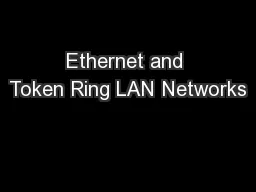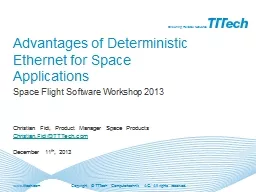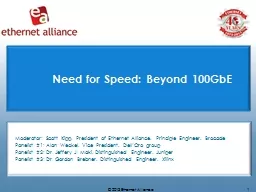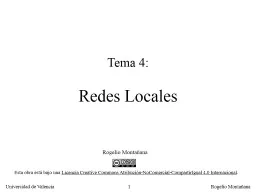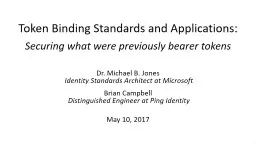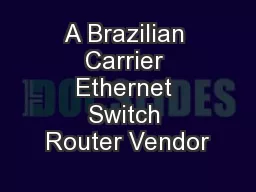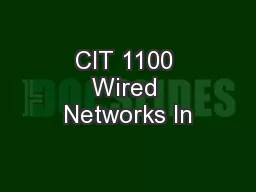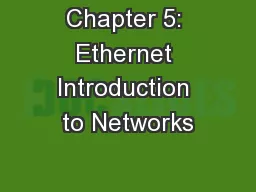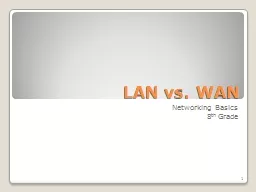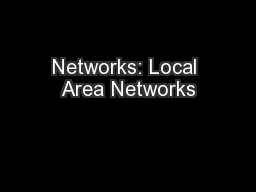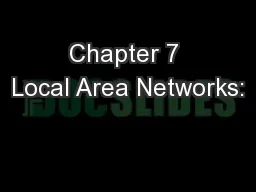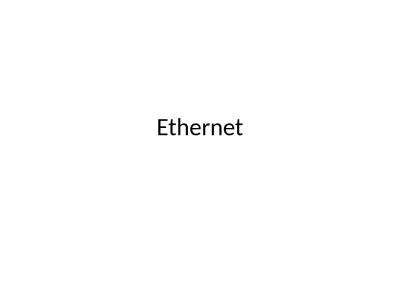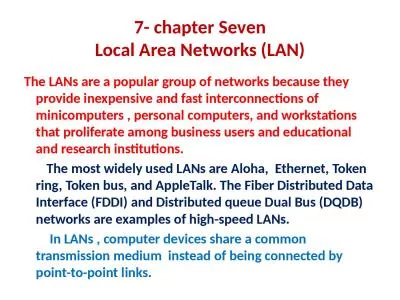PPT-Ethernet and Token Ring LAN Networks
Author : trish-goza | Published Date : 2018-11-04
Local Area Network local area network LAN is a computer network that is designed for a limited geographic area such as a building or a campus The three upper layers
Presentation Embed Code
Download Presentation
Download Presentation The PPT/PDF document "Ethernet and Token Ring LAN Networks" is the property of its rightful owner. Permission is granted to download and print the materials on this website for personal, non-commercial use only, and to display it on your personal computer provided you do not modify the materials and that you retain all copyright notices contained in the materials. By downloading content from our website, you accept the terms of this agreement.
Ethernet and Token Ring LAN Networks: Transcript
Download Rules Of Document
"Ethernet and Token Ring LAN Networks"The content belongs to its owner. You may download and print it for personal use, without modification, and keep all copyright notices. By downloading, you agree to these terms.
Related Documents

